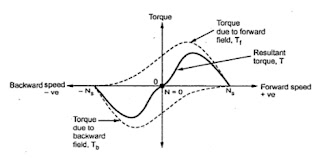Generation of Thermal Power:
About 58% (2,36,018 MW) of India's electricity capacity comes from thermal power stations, and 88%(210,600 MW) of that energy is generated by coal-based thermal power plants. Other sources (that generate high-temperature steam) include crude oil, liquid natural gas, and biomass.
There are four different types of coal found in India which are Anthracite(85-92% C), Bituminous(76-86% C), Lignite(60-70% C), and Peat. Peat is not used in thermal power generation because it has only 30 to 40% carbon, but the other three varieties are used widely. Of the above four types, bituminous coal is found in the maximum amounts in India.
 |
| Thermal Power Plant Layout |
Working Principle:
In a thermal power plant, heat energy is converted into electricity. It is based on the Rankine cycle. In a thermal power plant, heat is produced by burning coal. Steam is generated by this heat in the boiler, which turns the turbine. A synchronous generator is connected to the shaft of the turbine. The turbine provides the mechanical energy input to the generator, which is converted into electricity by the electro-mechanical energy conversion process.
Application of Different Blocks:
Low-Pressure and High-Pressure heaters:
Low Pressure and High-Pressure heaters are steam heaters. They are used for increasing the water temperature for improvement of efficiency. Steam is used to heat the condensate water from the condenser in the low-pressure heater, which is extracted from low-pressure turbines. The water after Boiler Feed Pump gets heated by an HP heater by steam which is extracted from High Pressure & Inter-Pressure turbines.
Deaerator:
The pressure exerted by certain gases (Oxygen, carbon dioxide, and ammonia) dissolved in water is harmful
because of their corrosive behavior towards metals, particularly at elevated temperatures. Thus in the modern high-pressure
boiler (for preventing internal corrosion), the feed water should be free from all dissolved gases, especially oxygen. This job is done by the deaerator that removes dissolved gasses to protect turbine blades.
Economizer:
Economizer extracts the heat from the flue gases and uses it to raise the boiler feed water's temperature to increase the system's efficiency. In simple words, An economizer is employed to absorb heat from the fired coal to improve efficiency.
Boiler-Feed Pump:
Boiler-Feed Pump is the highest-pressure generating pump in a thermal power plant. It consumes around 4MW of power. Water circulates naturally from the drum to the boiler and again to the drum due to the density difference between the water and the steam. In high-capacity generators (more than 200MVA) extra pump is used for this purpose.
Turbo Separator:
A turbo separator is used for separating water and steam inside the drum.High-Temperature Super Heater:
HTSH is used for heating the steam temperature up to 540℃.Inter-Temperature Super Heater:
ITSH is used for re-heating the steam to improve efficiency. As per the Rankine cycle, steam is directly sent from Inter Pressure Turbine to Low-Pressure Turbine.Cooling Tower:
Steam is Condensed using circulating water which is cooled by in cooling tower. The exhaust steam from the turbine transfers the heat to the
cooling water. This steam cannot be converted to work and must be rejected to restore the initial condition of the
working fluid. The condenser enables the exhaust steam to be used as the working fluid of the boiler in repetitive mode. A vacuum is created inside the condenser that increases the turbine's output. Almost 50% of energy is wasted inside the condenser in converting steam into water.
Primary Air Fan:
PA fans are high-pressure fans used for conveying coal powder from the mill to the boiler.Forced Draft Fan:
Oxygen is supplied by the FD fan to the boiler for proper combustion.Induced Draft Fan:
ID fan is used to extract flue gasses from the boiler.Electrostatic Precipitator:
ESP is used to collect ash particles from the flue gases that work on the principle of the electrical field.Air Pre Heater:
APH is used for removing moisture from the coal.High-Pressure Governor Control Valve:
HPCV and IPCV are the governing control valves, controlling the turbine's steam flow rate so that speed, frequency, and load are regulated.In thermal power plants, 8-10% of the power generated is used for auxiliary equipment. Therefore the efficiency of thermal power plants is around 35-40%.










